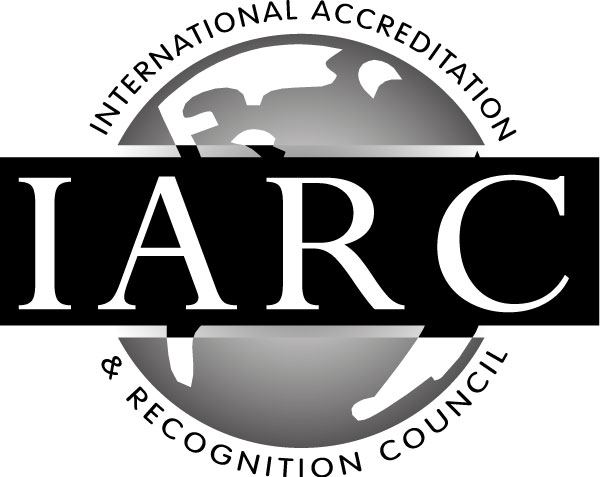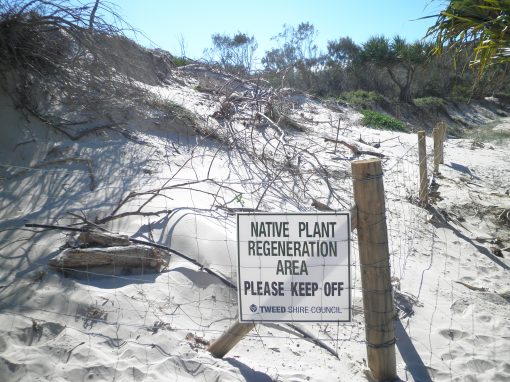Why study this Landscape Restoration (Revegetation) course?
Want to learn how to restore and revegetate a site? This Landscape Restoration (Revegetation) course online will help you do that and more!
Understand environmental systems and the care and regeneration of vegetation
This hands-on and practical landscape restoration (revegetation) course online will teach you about rehabilitating sites without having to do a degree, this is a good place to obtain the knowledge necessary to get you up and running.
Landscape restoration is a growing field. The importance of trees to land management cannot be overstated. Often in the past they have been seen as competing for valuable land space and felled indiscriminately. Over clearing of trees can lead to salinity problems and numerous forms of erosion and land slips Retention and where necessary, selective replanting of trees is now widely practiced and shows major benefits toward improving farm viability and ultimately production.
Gain practical skills in managing re-vegetation of trees, propagation, planting and more with this landscape restoration (revegetation) course online.
This online Landscape Restoration (Revegetation) course is suitable for:
- Farmers, Landscapers, Parks Manager, Gardeners
- Students, Teachers and Academics
- Environmental Consultants
- Land Managers, Soil Scientists or anyone else interested in building their understanding of how trees can be better used to improve or sustain
Course Aims:
- Develop the ability to write the scientific names of plants and to identify and compare different types of land degradation and rehabilitation alternatives.
- Outline the basics of ecology concepts and how soils, flora and fauna interact and affect one another.
- Develop basic seed propagation skills and knowledge.
- Describe further propagation and nursery techniques.
- Describe the effect of plants on improving chemical characteristics of a degraded site.
- Determine the physical effect plants have on improving a degraded site.
- Determine appropriate plant establishment programs.
- Determine procedures to care for plants, during establishment in a hostile environment.
- Determine techniques to maximise plant development in land rehabilitation situations.
- Determine the management procedures and rehabilitation requirements of degraded soil.
Lesson Structure
- The importance of trees – Erosion control
- Understanding plants
- Understanding plant identification
- Land management programs
- Biodiversity
- Soil degradation
- Erosion – Water erosion, Wind erosion, Control of erosion
- Salinity – Sources of salt, Control methods for salinity
- Soil acidification and other problems – Soil acidification, Compaction, Chemical residues
- Rehabilitation
- Biomass
- The Ecosystem – Abiotic components, Biotic components, Ecological concepts, The web of life, Other relationships between plants and animals
- Indigenous species
- Creating habitat corridors for wildlife – benefits, Other benefits, Situating corridors, Types of corridors
- Design considerations
- Edge effects
- What can happen at edges
- In general
- Soils – How soils develop naturally, The soil environment, Soil composition, Soil temperature
- Mycorrhizae
- Soil physical characteristics – Soil profile, Soil texture, Soil structure
- Soil chemical characteristics – Soil pH, Cation exchange capacity, Buffering capacity
- Improving soils
- Plant nutrition – What nutrients do plants need
- The nutrient elements – The macronutrients, The micronutrients
- Choosing the right fertilizer – How much fertilizer to apply
- Diagnosis of nutritional problems
- Pests and diseases and plant growth – Environmental factors
- Resistant plant species and cultivars
- Pests and Diseases – Biological control, Diseases include, Pests include, Life cycles, Preventative control
- Seed propagation – Seed sources – 4 sources, Maintaining genetic identity in seed, Hybrid seed production
- Why do plants produce so much seed
- Collecting and harvesting seed – guidelines
- Selecting plants to collect from
- Timing
- Methods of collection
- Cleaning seed
- Storing seed
- Difficult seeds – Germination treatments, Soaking in boiling water
- Stratification
- Fire
- Leaching seeds
- Sowing your seeds – When to sow, Propagation media
- Containers for propagation
- The bog method
- Pricking out or tubing seedlings – After care
- Quality control – The UC System of Soil Mixes
- Example of a production system
- Propagation stage
- Transplanting stage
- Growing on stage
- Distribution stage
- Sources of seed and information
- Books on seeds and seed germination
- Asexual propagation – Why cuttings? How to propagate a cutting, Classification of cutting types, Maintaining genetic identity in seed
- Types of Cuttings – Softwood cuttings, Semi-Hardwood Cuttings, Hardwood cuttings, Variations on cuttings, Nodal cuttings, Basal cuttings, Root cuttings
- Stock Plants – Planting out stock plants, Treatment throughout the year, Stock plants for root cuttings
- Ways of getting roots on difficult to root cuttings – Hormone treatments, Etoliation and banding, Cutting grafts, Misting/fogging, Light treatments, Bacterial treatments, Combining treatments
- Hormone Treatments in detail
- Nursery hygiene
- Spread of pests and diseases
- Recommended nursery hygiene practices
- Propagating Mixes – Vermiculite, Perlite, Sand, Rockwool, Peat moss
- Potting Media – Potting Soil Mixes, Pine Bark, Containers for potting up plants
- How to maintain plants in pots – Feeding, Watering, Ventilation and light, Temperature, Growing-on areas for container plants, Stop roots growing into the soil, Hardening off rooted cuttings
- The greenhouse – Types of greenhouses, Heated or unheated, Deciding on what you need, Problems with greenhouses, Environmental controls in the greenhouse, Temperature control
- Greenhouse irrigation methods, Runoff and leachate, Irrigation systems, Other structures for growing plants, The nursery site, How to propagate different species
- Soil contamination
- Symptoms on plants of chemical contamination
- Foliage burn
- Treating foliage burn
- Rehabilitating damaged soils
- Prevention
- Accidental spillage
- Rehabilitation methods
- Using plants to extract contaminants
- Growing plants on contaminated soil
- Rehabilitating a building site
- Soil chemical composition and plant growth
- Alkaline soils
- Lime contaminated soils
- Trees which grow in lime soils
- Pioneer plants
- Site protection – Windbreaks/shelterbelts, Windbreak design, Other considerations
- Designing and planting a firebreak – Fire prone areas, How to arrange plants, Distances from buildings, Consider prevailing winds, Consider vehicular access, Maintenance, Fire resistant plants, Plants likely to burn
- Stormwater, waterlogging and drainage – Stormwater
- Drainage – Water-logging on a home-site, Constructing a swamp
- Soil Compaction
- What to plant where
- Climate – Temperature, Wind, Frosts, Extreme hazards, Microclimates
- Plant selection criteria, Economics, Ongoing costs, Longevity, General hardiness
- Planting – When to plant
- Plant protection methods – Supporting trees, Staking, Frost protection for young trees, Sun protection, Mulching, Fencing, Wind protection
- Planning
- Rehabilitation techniques
- Coping with dry conditions – Overcoming dry soils
- Mulch – How to lay mulch, Mulch materials, Commonly used organic mulches, Living mulch and cover crops
- Weed management – Types of weeds, How are weeds spread? Preventative measures, Weed control, Methods, Commonly used herbicides
- Trees and large shrubs that tolerate salt
- Plant species that tolerate salt
- Planting procedures – Evergreens, Deciduous and bare-rooted plants
- Water and plant growth
- Transpiration
- Maintaining appropriate water levels
- Symptoms of water deficiency
- Symptoms of excess water
- Period of watering
- Minimizing plant water requirements
- Plant health – Conducting an inspection
- The Plant – Examining leaves, Examining fruit and flowers, Examining stem and branches, Examining roots, Identifying damage
- The Immediate Environment – Examining the soil, Examining surrounding plants, Other environmental factors, Methods of inspection
- Prioritizing problems
- Research
- Environmental Assessment – Conducting an Environmental Audit
- Implementing a Land Rehabilitation Management Program – determining land objectives, determining a program and replanting.
Enrol Now
- Experienced Tutor support
- Certificate sent to you
- Online study (Printed notes available)
- Self paced - no set timetable
- 12 months to complete course
From: $25.00 / week for 26 weeks
Get a Free Info Pack!











